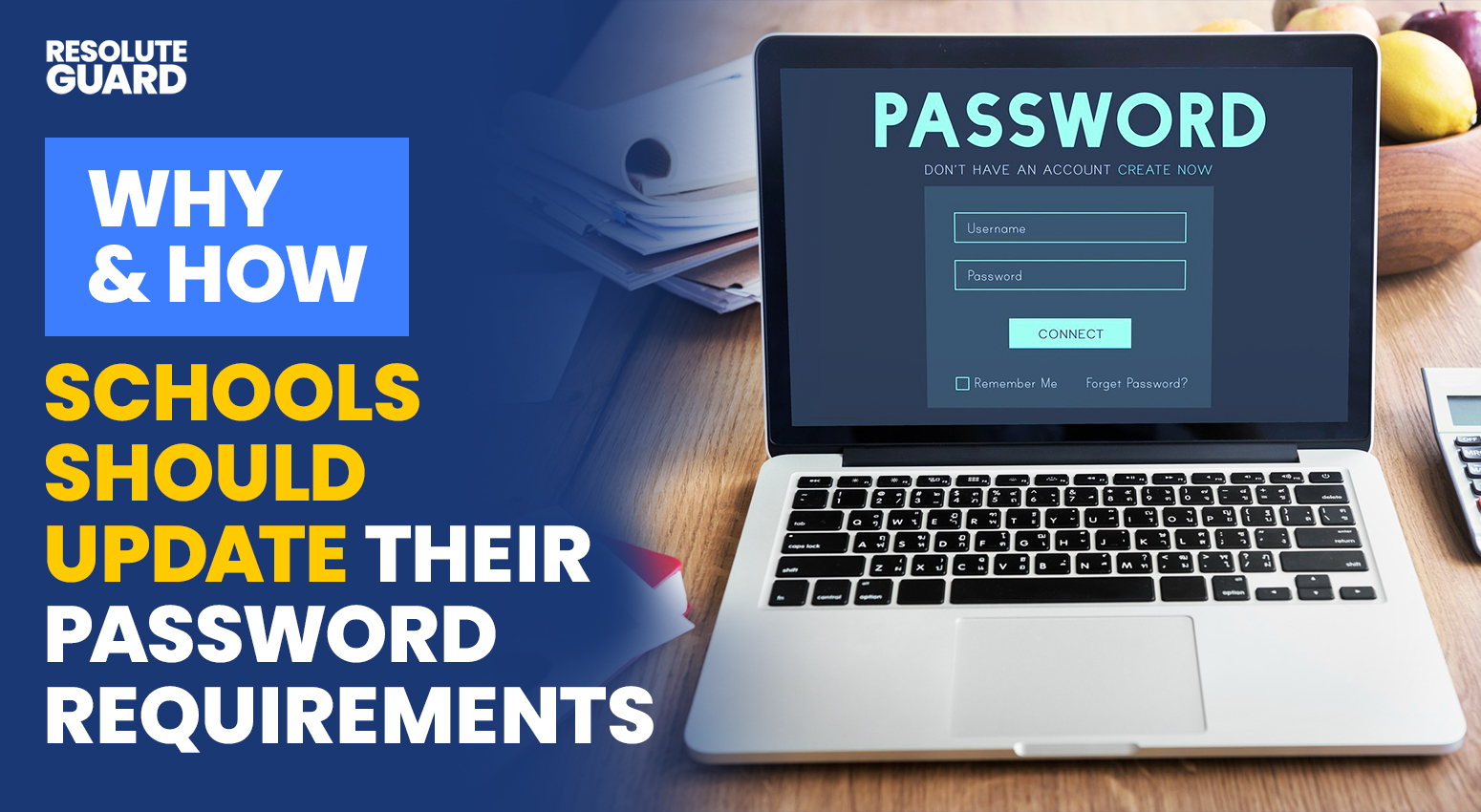Why and How Schools Should Update Their Password Requirements
Updating password requirements in schools is crucial to enhance security, protect sensitive information, and comply with evolving cybersecurity standards. Schools are increasingly becoming targets for cyber attacks, including data breaches, phishing scams, and ransomware. Hackers often exploit weak passwords to gain access to systems containing sensitive student and staff information. Ensuring this data is protected against unauthorized access is essential. Additionally, many regions have enacted stringent data privacy laws, such as GDPR in Europe and FERPA in the United States, which require robust measures to protect personal information. Strong password policies are a fundamental aspect of complying with these regulations.
To address these challenges, schools should implement strong password policies that require passwords to be at least 12 characters long and include a mix of upper and lower case letters, numbers, and special characters. Encouraging or mandating periodic password changes, such as every 90 days, and prohibiting the reuse of previous passwords can further enhance security. Using multi-factor authentication (MFA) adds an additional layer of security by requiring users to provide two or more verification factors to gain access. This could include something the user knows, like a password, something the user has, such as a security token, or something the user is, such as biometric verification.
Education and training are also critical. Schools should conduct regular training sessions to educate staff and students about the importance of strong passwords and how to create them, as well as how to recognize phishing attempts and other social engineering tactics. Providing ongoing support, including password management tools, can help users manage multiple complex passwords securely. Schools should also adopt password management tools to generate and store complex passwords securely, and utilize centralized password management systems to enforce policies and manage user access effectively.
Regular audits of password policies and compliance should be performed to ensure all users adhere to the established guidelines, and automated systems can be used to enforce password rules and prompt users to update their passwords when necessary. Updating password requirements in schools is a critical step towards enhancing cybersecurity, protecting sensitive information, and complying with legal standards. By implementing strong password policies, using multi-factor authentication, educating users, adopting password management tools, and enforcing compliance, schools can significantly reduce the risk of cyber threats and create a safer digital environment for students and staff.
To ensure these measures are effective, schools should follow guidelines and best practices from reputable sources such as the National Institute of Standards and Technology (NIST), FERPA, the European Union GDPR, Educause Security Guide, and the Cybersecurity and Infrastructure Security Agency (CISA). These organizations provide comprehensive resources and guidelines to help institutions implement robust cybersecurity measures, including strong password policies and multi-factor authentication.
Additional Best Practices
Embrace Emerging Technologies
Artificial Intelligence and Machine Learning
- Behavioral Analysis: Implement AI and machine learning technologies to analyze user behavior patterns. These technologies can detect anomalies that may indicate compromised accounts or insider threats. For example, unusual login times or access from unexpected locations can trigger alerts for further investigation.
- Automated Threat Detection: Use AI to automate the detection of threats and vulnerabilities. AI-driven systems can quickly identify and respond to potential security incidents, reducing the response time and mitigating risks.
Blockchain Technology
- Data Integrity: Utilize blockchain technology to enhance data integrity and security. Blockchain can ensure that student records and other sensitive information are tamper-proof and verifiable, reducing the risk of data manipulation and breaches.
- Decentralized Authentication: Explore the use of blockchain for decentralized authentication systems, which can provide a secure and transparent method for verifying identities and accessing school resources.
Strengthen Network Security
Network Segmentation
- Isolate Critical Systems: Implement network segmentation to isolate critical systems and data from less secure parts of the network. This reduces the risk of lateral movement by attackers within the network.
- Micro-Segmentation: Employ micro-segmentation techniques to enforce granular security policies for individual workloads, further enhancing protection against internal threats.
Secure Wi-Fi Networks
- WPA3 Encryption: Ensure that all Wi-Fi networks use the latest WPA3 encryption standard to protect against unauthorized access and eavesdropping.
- Guest Network Separation: Set up separate Wi-Fi networks for guests and non-essential devices to prevent them from accessing critical school resources.
Enhance Physical Security Measures
Access Control Systems
- Biometric Access: Implement biometric access control systems for sensitive areas such as server rooms and administrative offices. Biometrics provide a higher level of security compared to traditional keys or card-based systems.
- Security Cameras: Install security cameras with remote monitoring capabilities to enhance physical security and deter unauthorized access.
Secure Disposal of Sensitive Information
- Data Destruction: Ensure that all physical and digital records containing sensitive information are securely destroyed when no longer needed. This includes shredding paper documents and using data-wiping software for digital records.
- E-Waste Management: Implement proper e-waste management practices to securely dispose of outdated or damaged electronic devices.
Develop a Culture of Cybersecurity
Promote Cyber Hygiene
- Cyber Hygiene Campaigns: Conduct ongoing campaigns to promote good cyber hygiene practices among students, staff, and parents. This includes the importance of updating passwords, recognizing phishing attempts, and maintaining personal device security.
Peer-to-Peer Training: Encourage peer-to-peer training sessions where tech-savvy students and staff can share cybersecurity tips and best practices with their peers.
Encourage Responsible Use of Technology
- Digital Citizenship Programs: Implement digital citizenship programs that teach students about the ethical and responsible use of technology. These programs can cover topics such as online privacy, digital footprint, and the consequences of cyberbullying.
- Parental Involvement: Engage parents in cybersecurity education by providing them with resources and training to help them understand the importance of cybersecurity and how they can support their children’s safe use of technology.
Maintain Regulatory Compliance and Best Practices
Regular Policy Reviews
- Policy Updates: Regularly review and update cybersecurity policies to reflect the latest best practices and regulatory requirements. This ensures that the school’s cybersecurity framework remains robust and up-to-date.
- Stakeholder Input: Involve stakeholders, including IT staff, educators, administrators, and legal advisors, in the policy review process to ensure comprehensive and effective policies.
Documentation and Reporting
- Incident Reporting: Establish clear procedures for reporting and documenting cybersecurity incidents. This includes maintaining detailed logs of incidents, responses, and outcomes to facilitate learning and continuous improvement.
- Compliance Documentation: Maintain thorough documentation of compliance efforts with relevant data protection laws and regulations. This documentation can be critical during audits and regulatory reviews.
In conclusion, updating password requirements and implementing comprehensive cybersecurity measures in schools are essential steps to protect sensitive information and ensure a safe learning environment. By adopting strong password policies, using multi-factor authentication, educating the school community, leveraging advanced security technologies, and regularly updating systems, schools can significantly reduce the risk of cyber threats. Continuous improvement and collaboration with other institutions further enhance cybersecurity efforts, ensuring that schools remain resilient against evolving cyber threats.

